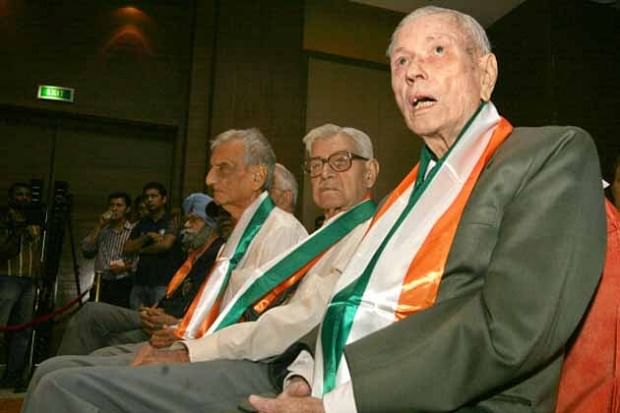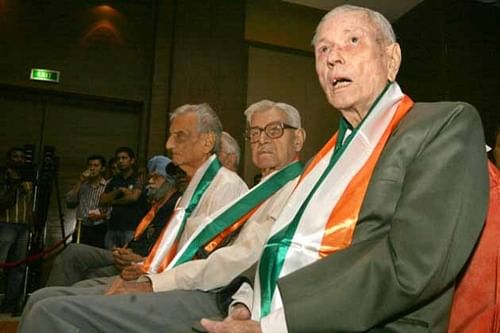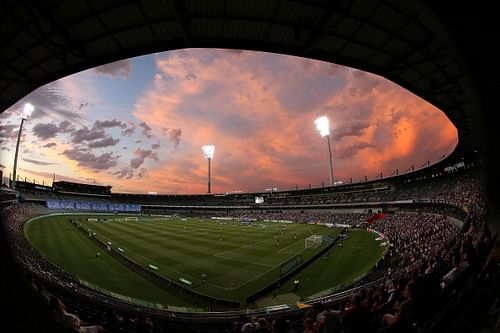
Indian Sport: Memories of an age gone by

Earlier this month, two legends of Indian sports, three times Olympic gold medalist Hockey player Leslie Claudius and 1951 Asian Games Football gold medalist T. Shanmugham expired after living life to the full. Coincidentally, both were half backs, or midfielders in current terminology. Claudius played at right and Shanmugham as left half, in the 2-3-5 formation (two back system) popular in India during his playing days.
Both remained involved with their respective sports even after retirement. Claudius served Bengal hockey for many years and was manager of the Indian team during the 1974 Asian Games. As manager, it was Claudius who broke the prevailing myth in India hockey that Muslim players will not go all out against Pakistan. In the 1974 Tehran Asian Games, he insisted on Aslam Sher Khan playing against Pakistan in the final. On the first day, the match ended in a 1-1 draw with Aslam scoring the equalizer. Shanmugham was Salgaocar club’s longest serving coach, from 1979 till 1996. He was also Technical Director of the Indian team which took part in the 1989 Nehru Cup at Margao, Goa. His record of winning back-to-back Santosh Trophy titles with Goa in 1983 and 1984 is also unique.
Both were exemplary human beings who put the game above self. Claudius had an awful setback in the summer of 1978. His son Bobby Claudius, also a half back, had returned home after representing India in the 1978 Buenos Aires World Cup. India finished sixth but young Bobby Claudius, making his World Cup debut, had excelled and a glittering career awaited him. Sadly, he died after a motor bike accident in Calcutta. Helmets were not compulsory in those days. Despite such a setback, Leslie Claudius did not become bitter or morose or withdraw from life. He continued to serve as a selector for both Bengal and India.
Shanmugham and Claudius also belonged to an era in which loyalty and not money was the main criteria. During his seventeen-year coaching stint with Salgaocar, the wiry Shanmugham never earned more than Rs. 20,000 per month. Despite lucrative offers from the Bengal clubs, he never left. Similarly, Claudius served Calcutta Customs all his life. Even 25 years after his retirement, he was a regular the Calcutta Customs club, for a round of cards. The amiable Claudius loved all sports. In the 1948 London Olympics, after the final, he went to the Oval to see Don Bradman play his last test match against England. During the 1960 Rome Olympics, he was amongst the select international athletes the Pope met.
Above all, both represent the end of an era, the passing away of a style of play which was both successful and a delight to behold. Shanmugham belonged to the Bangalore school of football, which relied on short-passing, possession football. It is a style of play reminiscent of the current Barcelona and Spanish national team. The build-up in attack was always elaborate with a series of short passes, at times very intricate but effective. That is the style of play adopted by Mysore when they won the Santosh trophy in 1946 and 1952 and were runners up in 1953 and 1955. Shanmugham exemplified the Bangalore school of football, which shunned physical contact and frenetic pace. His game was cerebral, based on interceptions, sound technique and astute passes. Some of the most skillful players in Indian football have emerged from Bangalore including the legendary Ahmed Khan and S. Raman known for their scintillating dribbling skills and M. Sattar, the perfect inside forward with his precision passes. There were six players from Bangalore in the Indian team for the 1948 London Olympics.

When India won the gold medal in the 1951 Asian Games beating Iran 1-0 in the final, besides the late Shanmugham, others from Bangalore in the squad were goalkeeper K.L Varadaraj and forwards P. Venkatesh, MA Sattar and Ahmed Khan. In 1951, Venkatesh was playing for East Bengal and Sattar for Mohun Bagan but they were originally from Bangalore. Shanmugam made his debut on March 7, 1951 against Afghanistan in the semifinal of Asian Games in New Delhi. Apart from that, he also represented India in another match – in the 1952 Helsinki Olympics against Yugoslavia. Shanmugam represented Mysore in the Santosh Trophy 1949-54 and helped his state win this coveted trophy in 1952.
None of the greats from Bangalore went into coaching and that is what makes Shanmugham’s dedication praiseworthy. He changed the style of football in Goa. In Calicut, 1987 Salgaocar became the first Goan club to enter the Federation Cup final. They lost 0-2 to Mohun Bagan in the final. For four successive years Salgaocar reached the Federation Cup final, wining twice and being runners up twice. They had only two foreigners in that side, Valentine Ezeugo and Iranian junior international Abolghasem Kosagavar. Well known Indian players in that team were legendary international custodian and Arjuna award winner Brahmanand stalwart defenders Derrick Pereira and Norbert Gonsalves and international midfielders Savio Madiera and Lawrence Gomes.
A year later Salgaocar became the first Goan club to not only win the Federation Cup but also to win a tournament in Delhi. They defeated tenacious Border Security Force (BSF) 1-0 in the final. Mario Soares, the youngest player in the team scored the match winner, off a pass from their solitary international recruit, the Nigerian Valentine Ezeugo. Soares was just 19 years old when he scored the match-winner and is till now the youngest player to have scored in the Federation Cup final. Overcoming the Delhi jinx was vital for Salgaocar. The 1952 Olympian and Salgaocar coach since 1979, Shanmugham had said, “In the 1980s, clubs from Goa did not travel well. They only performed well in a familiar environment like in Goa and the Rovers Cup in Mumbai. I had to make them believe in themselves that they could perform well anywhere. “
Salgaocar’s first ever Federation Cup triumph was a tribute to their fitness and tactics. They played six matches in eight days, winning twice on penalties. In the final, Coach T. Shanmugham’s game plan clicked. He had said, “Our tactics of keeping the ball on the ground helped us win. I told my boys not to play in the air, as the taller BSF players are better in aerial duels. Also I asked my midfielders not to allow the BSF players to hold on to the ball for long. I am glad my players stuck to the plan and we deservedly won. It was also a triumph of our physical fitness.
In 1989, Salgaocar lost the services of seven players in the inter-club transfer to newly formed, big-money spending MRF of Goa. However in their opening quarter final league match of the 1989 Federation Cup Salgaocar beat MRF 1-0 with a goal by Bruno Coutinho. The victory was a great morale booster for Salgaocar and they went from strength to strength. In the semi finals, they beat the glamorous Mohun Bagan for the first time with goals by Ignatius Dias and Bento Andrews. They went on to retain the trophy, beating Mohammedan Sporting 2-0 in extra time, with Valentine Ezeugo and Bruno Coutinho being the scorers. A year later, Salgaocar entered the Federation Cup final for the fourth year in a row but lost 1-2 to Kerala Police at Thrissur.
Similarly, Leslie Claudius was the last of the great Anglo Indian players who dominated Indian hockey in the decades before Independence. The predominance of Anglo-Indians in the national hockey team (nine in 1928 Amsterdam Olympics, eight in Los Angeles, 1932 and seven in Berlin 1936) is unique. The Anglo Indian style of hockey based on crisp passing, combination play, sound positional sense and change of pace was quite devastating.
What were the factors which led to such a dominance of minority community members in the national hockey team in 1928? The Anglo-Indian community in pre-partition India worked mostly in the Railways, Police, Port Trust, British run commercial firms and as school teachers. Was it the nature of such employment which gave them time to practice or their proximity to the British, which enabled them to excel in hockey? Cdr. G. Nandy Singh (Retd.) member of the victorious 1948 London Olympics team, who played for Calcutta Port Trust in pre-Independence days, feels that “the Anglo Indians were a privileged class during the British regime” and this enabled them to excel in sports. Even after Independence, in the 1948 London Olympics, there were five Anglo Indians in the Indian hockey team which beat Netherlands 2-1 in the semi final and Britain 4-0 in the final. A remarkable Anglo-India member of this squad was centre forward Reggie Rodrigues, who during his playing days was an active sports journalist with the Times of India (Mumbai). Rodrigues, who later migrated to Canada, is probably the only active journalist who even played in the Olympics.
The number of Anglo-Indians in the national squad declined as members of the community started migrating to Australia, England and Canada in the 1950s. The last Anglo-Indian to play for India in the Olympics was goalkeeper Mark Peterson in the 1988 Seoul Olympics. After Independence, Anglo Indians started migrating to Australia, Canada and England. Those who were left behind became a marginalized minority.